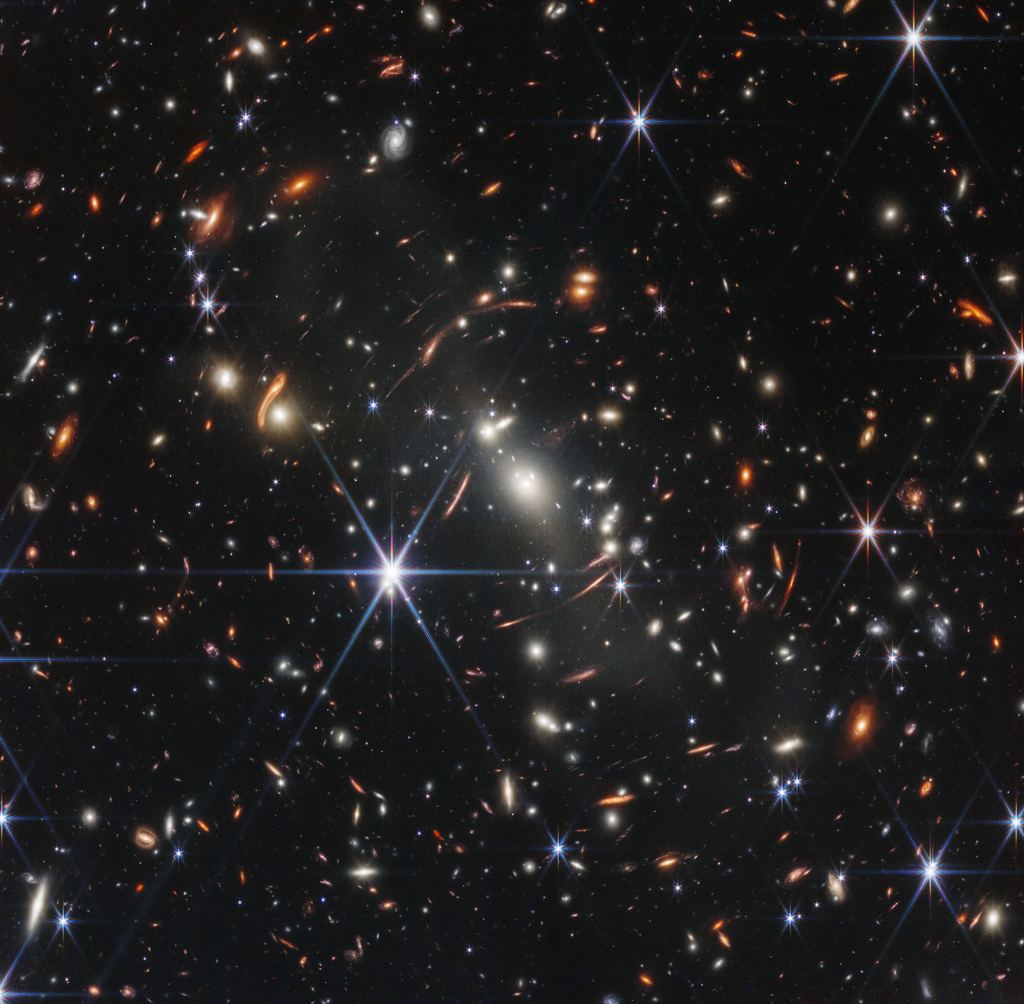By now, almost everyone has seen the first-release images from JWST and marveled at these amazing views of the infrared universe the telescope was launched to explore. The view of SMACS 0723 seen above illustrates the promise JWST holds. While there are many more early-release images in the observation pipeline, we’re starting to see the first research papers come out.
As expected, studies of distant galaxies are grabbing headlines already. Wow, are these findings amazing! In the last couple of days, websites and social media have been alive with images of a blob that, in reality, is one of the oldest (earliest) galaxies ever seen. It’s one of two—GL-z11 and GL-z13—that show us what they looked like when the Universe was extremely young, about 300 million years after the Big Bang.
When confirmed, they’ll mark a milestone in studies of the infant Universe. A Look back in Time and Across Space Thanks to JWST and its high-resolution infrared instruments, astronomers can now observe the earliest epochs in cosmic history. Of course, Hubble Space Telescope paved the way for some of this.
For example, it provided the first look at galaxy GNz11. Now, JWST is following up with a study of that galaxy and the discovery of another one called GL-z13. GL-z13 is a galaxy in the early universe that appears as seen by JWST when the universe was only a few hundred million years old.
Courtesy: NASA, ESA, CSA, STScI These galaxies exist at a time that has been, until now, largely unexplored. So, a consortium of astronomers (led by Rohan P. Naidu of the Center for Astrophysics, Harvard & Smithsonian) proposed a JWST search for luminous galaxies in the first several hundred million years after the Big Bang (at a redshift of z > 10).
This work was done as part of the JWST Early Release program and the exploration will likely continue for quite some time. The search revealed that the two galaxies—GL-z11 and GL-z13—are likely billion-solar-mass galaxies. That’s pretty remarkable given their presence in the early Universe, especially since the first stars began forming around one to two hundred million years after the Big Bang.
These galaxies are also bright enough that astronomers will be able to do follow-up spectrographic studies to determine more about them. Computer modeling indicates that these galaxies are somewhat small and may well have disks in place, even at their young age. Based on the early observations with JWST, it seems very likely GL-z11 and GL-z13 have a population of hot, young stars (which would be very bright in ultraviolet light), and that each galaxy could be bursting with star-formation regions.
These stars and regions should be very good candidates for follow-up observations using JWST’s Near-Infrared Spectrograph. Are There More of These Galaxies Out There? One exciting implication of this discovery is that these two distant galaxies in the early Universe may be just the tip of the iceberg. There could be many more in every direction JWST looks.
Remember the excitement when Hubble Space Telescope (HST) performed its first deep-field study? It pointed at what looked like a fairly vacant area of the sky, looking to see what was “out there. ” The observations revealed distant galaxies out as far as HST could see. Other deep-field observations in other directions in the sky delivered the same result.
It turns out the universe is galaxies all the way out. So, if these two galaxy discoveries are any indication, JWST is about to explode our view of the infant Universe the same way HST did with its deep field observations. Of course, astronomers will work to confirm these galaxies spectroscopically.
And, if what they promise plays out across the sky—with the discovery of at least two (and maybe more) galaxies at redshifts between 11 and 13 in every direction JWST looks—then we’ll be in for some interesting times. At the very least, this amazing infrared observatory is pushing the cosmic frontier much farther out, peeking beyond what we currently know. In the very near future, it could look all the way out to the brink of the Big Bang itself.
Stay tuned! For more Information Two Remarkably Luminous Galaxy Candidates at z ~ 11-13 Revealed by JWST The post JWST Finds Galaxies Just 300-400 Million Years After the Big Bang, and It’s Just Getting Started appeared first on Universe Today. .
From: universetoday
URL: https://www.universetoday.com/156826/jwst-finds-galaxies-just-300-400-million-years-after-the-big-bang-and-its-just-getting-started/
